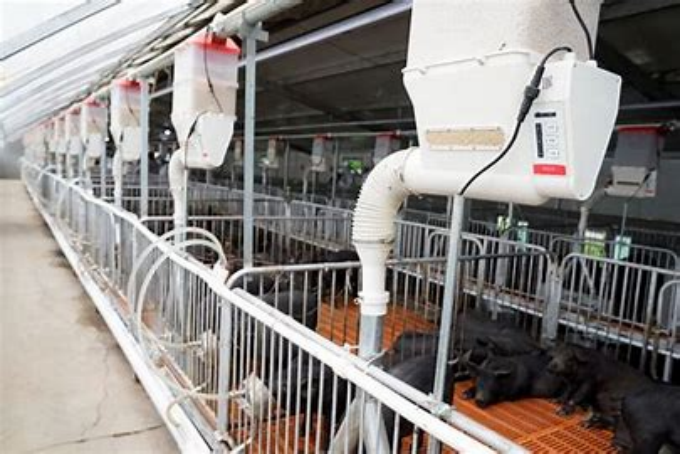
Release Date:2024.08.23
Deficiencies and difficulties in intelligent pig farming
Although at present China's pig automatic feeding, manure treatment, environmental regulation, behavior monitoring, temperature monitoring, body measurement and weight prediction technology and other intelligent pig breeding technology has made great progress, but it is still not mature enough to be rolled out on a large scale, this is because at present China's pig breeding industry still has the following four problems:
(1) The application of environmental regulation technology based on dynamic behavior is insufficient. At present, most of the environmental regulation of pigs is based on the agreed environmental regulation according to the region and growth period, but the real-time regulation based on the real-time behavioral representation of the growth process has not been carried out. The main reason is that the research on pig behavior of different quality, different region and different growing period is not deep enough.
(2) The collection of pig phenotype information is not timely and accurate enough. In large-scale pig breeding, due to the large number of pigs, it is impossible to measure the height, weight, length and width of each pig in time, and often only measure the pig once when it is put into the market. In this case, it is unrealistic to increase the manual measurement of pigs. Only by using algorithms to measure pigs can it be timely and dynamic.
(3) The automatic monitoring technology of pig health is still very immature. There are still some difficulties to be solved by using artificial intelligence technology to monitor pig behavior and temperature, so as to realize pig health monitoring. For example, the low height of the pig house camera cannot take a full picture, the price of accurate infrared equipment is expensive, the pig house has spider web and image distortion correction is difficult, etc. These problems lead to the current automatic monitoring technology of pig health is still very immature.
(4) The application of precision feeding is not wide. Precision feeding is currently mainly used in breeding sows, but is still less used in finishing pigs. On the one hand, to achieve precise feeding, it is necessary to transform pig farms, which requires very high costs. On the other hand, at present, precise feeding only allows each pig to eat a certain amount of feed, but it cannot be quantitatively modulated according to the body condition of pigs, so it is impossible to control the ratio of pig meat.

Future development trend of intelligent pig farming
Due to the traditional pig breeding methods have problems such as high labor cost, low production efficiency, low disease prevention and control ability and large feed waste rate, it is difficult to meet the increasing demand for pork in the development process of Chinese society. Therefore, the future pig breeding industry must be upgraded to a large-scale, intelligent and intensive breeding mode with the advantages of low labor cost, high production efficiency and strong disease prevention and control ability. The main development direction of intelligent pig raising technology in the future is mainly reflected in the following four aspects:
(1) Dynamic environmental control based on pig welfare breeding. To achieve automatic environmental control according to the different living environment requirements of different breeds of pigs at different ages.
(2) Precise regulation of individual nutrition of pigs. Reasonable nutrition collocation and feeding should be carried out according to the nutritional needs of different breeds of pigs at different ages. The construction of precise feeding model for pig breeding is the premise of carrying out precise nutrition control and is a hot research field at present.
(3) Intelligent health monitoring and early warning. Behavioural monitoring, temperature monitoring, body measurements, weight estimation and big data analytics are used to give early warning to sick pigs and sub-healthy pigs to prevent the spread of disease from barn to barn.
(4) Factory intelligent breeding. The future large-scale, intelligent and intensive pig breeding mode can realize intelligent pig breeding in buildings by establishing standardized buildings and installing various environmental sensors, infrared cameras and automatic feeders in the buildings.

If you want to learn more about the pig industry, please visit the Leman China Swine Conference website for more information.
Source: Watson Shared Think Tank
If there is any infringement, please contact to delete.